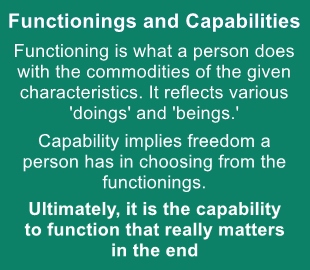- Home
- Prelims
- Mains
- Current Affairs
- Study Materials
- Test Series
 EDITORIALS & ARTICLES
EDITORIALS & ARTICLES
Bridge the distance between student and teacher to bridge the digital divide
Discourse on school education during the pandemic has largely focused on the lack of access to digital devices. According to a survey conducted by the Centre for Budget and Governance Accountability (CBGA) in June-July, 2021, the experiences of students studying at the secondary level suggests an underlying challenge i.e the limited presence of teachers.
Digital Inclusion

 Issues
Issues

- India’s journey to digital inclusion started with the implementation of the world’s largest identity project, Aadhaar, giving all citizens a platform to have a digital identity which could open the door to plethora of opportunities.
- Adoption of emerging technologies: Over the past few years, increased adoption of emerging technologies, such as Artificial Intelligence (AI), IoT and Big Data, is paving the way for a more digitally inclusive society that ensures employment, independence, and overall well-being of people from different strata of society without any bias.
- Since the last couple of decades, India’s technology service industry is at forefront and driving technologies enabled business transformation across the world.
- Empowerment of communities (Amartya Sen’s capability approach):Development policies and programmes aim not only at delivering a set of services, but also at enabling communities towards greater empowerment, through building their capabilities.
- The potential of ICTs is also not only as a service delivery platform, but also as a means for empowerment of communities towards self-determined goals.
- The Digital India campaign was launched by the Government of India in 2015 for providing government services electronically through digital modes.
- Aim: It thus aims to empower citizens by providing them with fast internet connectivity.
- Enabler for other schemes: Further, it acts both as an enabler and a beneficiary for the progress of other schemes like Make in India, Startup India, Bharatmala, etc.
- The programme has been structured into the three vision areas and pillars.
- Digital infrastructure as a utility to every citizen
- Governance and services on demand
- Digital empowerment of citizens

- Digital illiteracy: High level of digital illiteracy is the biggest challenge in the success of digital India programme. Low digital literacy is key hindrance in adaptation of technologies
- Lack of infrastructure: it is one of the most prominent challenges which makes access to stable and fast internet connection and expensive affair
- Only a small section of total households in India have a wireline broadband connection added to the growing digital divide
- The organised broadband sector has a limited reach while the unorganised players lack the adequate infrastructure and technical know how
- Cost and connectivity: people suffer in the areas where internet connectivity is not good
- Also opting for internet facilities is not everyone's cup of tea, the poor of the country do not have the privilege to a Ford high speed internet
-
- The term digital divide has started to gain a lot of momentum in recent times, our ignorance over this widening gap has also surfaced with the influx of the pandemic.
- Digital divide is the uneven distribution of access to current information and technology between different demographics and regions.
- Living in the internet age, it is essential for us to understand the critical role technology plays in our lives. Technology defines how we live, work, earn, learn, and grow.
- Facts: in India the digital devices significantly going problem, country has over 550 million internet users placing it at the second rank for highest number of internet users globally
- However the ranking sounds impressive, but more than half of India's population does not have access to internet depicting the stark digital divide in the country
- Access to basic needs: Even basic needs like access to vaccines, education and reliable information amidst fake news and misinformation have begun to plague society.
- Vulnerable sections: Families with low income, those with less formal education, rural populations, the elderly and older workers, the disabled community and the trans community have found themselves on the wrong side of this divide.
- Gender based digital divide: The digital divide has also spotlighted the widening gender gap when it comes to access to technology.
- The women have become more susceptible to this challenge as there is a notion that access to technology can drive them on the wrong path.
- The resulting digital illiteracy has also deterred women entrepreneurs from moving their businesses into online marketplaces.
- Infrastructure development: To transform the digital divide into digital inclusion, there is need of-
- excellent bandwidth of internet at an affordable price
- devices with internet access to meet everyone's needs
- quality technical support, applications and digital environments that make the user self-sufficient
- Ensuring 5G network: Telecom Regulatory Authority of India (TRAI) has suggested using Fixed Wireless Access devices (FWA) connected to 5G networks to reduce the digital divide existing in India and to ensure that the 5G network reaches everywhere,
- Socio economic issue: The digital divide is not just a governmental or administrative issue, it is also a socio-economic issue. It is essential to treat digitisation as a fundamental right and work towards attaining a digitally inclusive society.









 Latest News
Latest News General Studies
General Studies